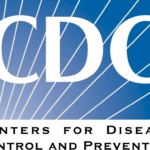A study found that the incidence rates of Long COVID dropped from the pre-delta era of COVID-19 through to the Omicron era.

The early years of the pandemic included various dominant strains of COVID-19 including the original wild-strain, and the Delta and Omicron variants. During each of these periods, incidence rates increased, mortality rose, and there was the introduction of the vaccines.
A new study that was published in the New England Journal of Medicine examined the rates of Postacute sequelae of severe acute respiratory syndrome coronavirus 2 (SARS-CoV-2) infection (PASC), otherwise known as Long COVID, over the early years of the pandemic and compared US veterans to a much larger noninfected contemporaneous controls cohort.
Specifically, in their findings, the investigators reported that vaccinated patients saw a decrease in the incidence rates of Long COVID compared to those who were unvaccinated. The study looked at the health records of more than 440,000 veterans with COVID-19 and more than 4.7 million people who were noninfected in a nearly 2 year period—between March 1, 2020, and January 31, 2022.1
What You Need to Know
The study published in the New England Journal of Medicine found that vaccinated patients had a significantly lower incidence of Long COVID compared to unvaccinated patients.
Over the early years of the pandemic, the incidence rates of Long COVID dropped significantly from the pre-Delta era to the Omicron era.
A key finding from a separate study indicated that the incidence of Long COVID was higher following initial COVID-19 infections compared to reinfections, particularly during the Omicron period.
“The cumulative incidence of PASC at 1 year was lower among vaccinated persons than among unvaccinated persons during the delta era (difference, −4.18 events per 100 persons [95% CI, −4.47 to −3.88]); incidence rate ratio, 0.56 [95% CI, 0.54 to 0.59]) and the omicron era (difference, −4.26 events per 100 persons [95% CI, −4.49 to −4.05]; incidence rate ratio, 0.45 [95% CI, 0.43 to 0.47]),” the investigators wrote.1
Incidence Rates of Long COVID Over the Different Variants
Additionally, the investigators found that the incidence rates of Long COVID dropped from the pre-delta era of COVID-19 through to the Omicron era. This was especially profound during the Omicron period as it was 66% of the rate of Long COVID during the Delta era.
“The cumulative incidence of PASC at 1 year was lower during the omicron era than during the pre-delta era (difference, −2.66 events per 100 persons; 95% CI, −2.93 to −2.36) and the delta era (difference, −1.75 events per 100 persons; 95% CI, −2.08 to −1.42), corresponding to an incidence rate ratio of 0.74 (95% CI, 0.72 to 0.77) and 0.82 (95% CI, 0.79 to 0.85), respectively,” the authors wrote.1
“The cumulative incidence of PASC during the first year after SARS-CoV-2 infection decreased over the course of the pandemic, but the risk of PASC remained substantial even among vaccinated persons who had SARS-CoV-2 infection in the omicron era,” the authors concluded.1
Long COVID During Omicron
Although there is still much to learn about the pathways to Long COVID, diagnosing the condition and treatment, more studies are shedding light on it. In a separate study, investigators found a higher incidence of Long COVID following initial infections compared to reinfections, particularly during the Omicron period.2
“We are actively following up on this research with a causal approach to more clearly define and quantify conclusions about the relationship of COVID reinfections and Long COVID. We hope this work will help clinicians, patients, and the general public better understand the risks of COVID reinfections and their impact on Long COVID,” Emily Hadley, research data scientist, RTI International, said in a recent interview with Contagion.2
References
1. Xie Y, Choi T, Al-Aly Z. Postacute Sequelae of SARS-CoV-2 Infection in the Pre-Delta, Delta, and Omicron Eras. N Engl J Med. Published online July 17, 2024. doi:10.1056/NEJMoa2403211








